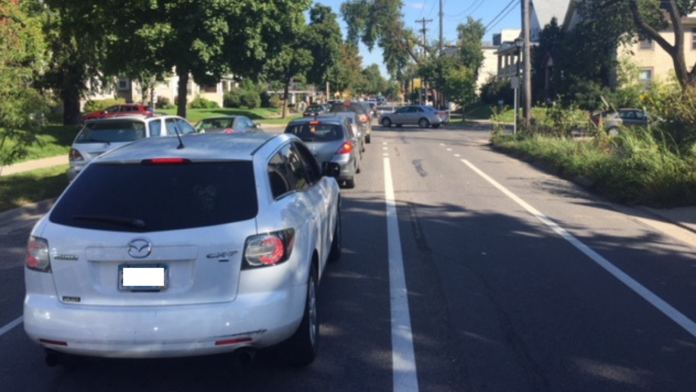If you drive the Twin Cities freeways, you don’t need to read MnDOT’s annual report to know traffic congestion gets worse every year. But for the record, 2018 ranks as the worst on record for metro drivers in the more than 25 years of keeping track, according to the Star Tribune.
Drivers were caught in congestion 25% of the time during the morning and afternoon commutes in 2018, according to the Minnesota Department of Transportation. That’s the highest level of congestion since the state began its annual highway traffic surveys in 1993.
And things are not likely to improve, said Brian Kary, MnDOT’s director of traffic operations. “This is an upward trend that we have been seeing for quite a few years,” he said. “There is only so much we can do. The best we can hope for is that things plateau.”
Kary’s attitude reflects the agency’s failed strategy highlighted in the Center’s landmark 2017 traffic congestion report. The policy shift puts increasing emphasis on transit, biking and walking to the detriment of building more miles of freeways and roads.
The council recognizes that congestion will not be eliminated or significantly reduced in the Metropolitan Area,” the Met Council’s 2030 transportation plan states.
“Since 2010, MnDOT’s strategy has shifted from reducing congestion toward providing alternatives to congested travel,” according to the agency’s latest Annual Minnesota Transportation Performance Report.
The Met Council and MnDOT are all about encouraging Twin Cities residents to drive less, though most of us still prefer being stuck in traffic to the alternative. Even the never-ending 35W project and other major road construction projects underway will not significantly improve performance, according to the state agency.
When MnDOT completes construction on I-35W in downtown Minneapolis and a new MnPass lane on I-35W from Roseville to Lino Lakes, that may add some short-term improvement, Kary said. But without adding more capacity on highways across the metro, he said, those improvements may just push the problems downstream.
“There is just a lot of stress on the roads,” Kary said. “You will be sharing the roads with more travelers.”
Of course, no annual MnDOT traffic congestion report would be complete without a pitch for taxpayers to provide more funding, even if much of it wouldn’t go to roads.
Money for mitigation efforts has been tough to get from the Legislature in recent years.
“As the Twin Cities grow, and our roads continue to age and deteriorate, it’s imperative that we identify a long-term, dedicated funding solution to invest in transportation, improve our system’s efficiency and keep Minnesotans moving,” MnDOT Commissioner Margaret Anderson Kelliher said in a statement.
That may be shorthand for another attempt by the Walz administration to raise the state gas tax next year. If and when that happens, you can count on American Experiment to renew the successful drive from the 2019 legislative session to put the brakes on it.


















